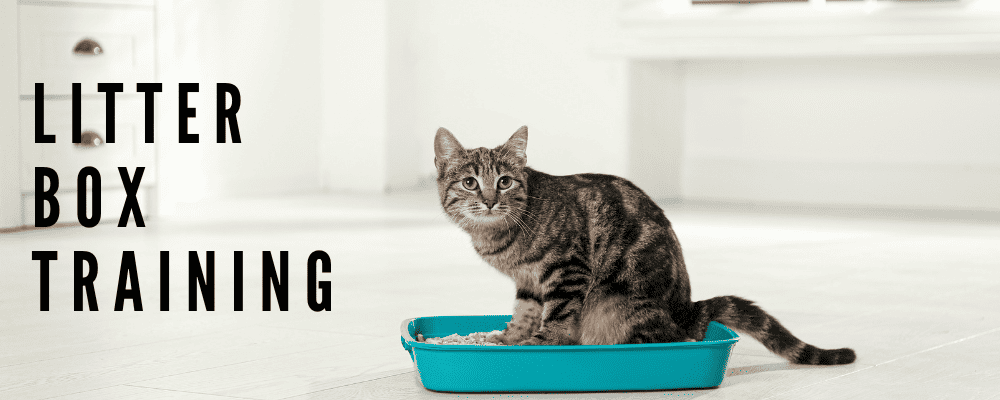One of the big advantages of owning a cat is that almost all cats come litter box trained. By nature, they will urinate and defecate in a soil-like substance if it is provided.
The Litter Box
The number one behavioral problem of cats is urinating outside of the litter box (inappropriate urination). There are several things that cause this frustrating problem, but some of those are related to the litter box. The following comments are included to prevent problems later because cats are particular about their litter boxes, the litter, and the location.
Choose a litter box that is large enough for your cat to fit in comfortably. Your cat needs to be able to turn around freely. An 18 X 14 inch box with 4-inch sides is appropriate for most adult cats. You don’t have to buy a commercial litterbox. Any container will do. If the cat has a bad aim, use a box with high sides.
We do not recommend a box with a top (hood). Although hooded litter boxes are more private and better contain the litter, they also trap odors inside. Because cats are so fastidious, these odors often cause them to seek other places to urinate. Many cats exhibiting inappropriate urination will return to their litter boxes when the lid is removed.
Litter Box Location
The location of the litter box is important. It should be on an easily cleaned surface, as some cats don’t always aim well. Litter is also scratched out or tracked out of the litter box frequently. It is very important that the litter box be placed in a quiet, low-traffic, non-threatening location. Cats need their privacy and will avoid a litter box that is in a high traffic area or a location accessible to dogs.
Accessibility
Eliminating outside of the litterbox could be a sign of urinary tract infection, but it could also be a sign that arthritis is making it difficult for your cat to jump into the box. Kittens and old arthritic cats may have trouble jumping into the box. The box should be easily accessible. Cut down the side of the box or use a baking sheet or roasting pan. We want to make it as easy as possible for your cat to get to it.
How many litter boxes?
You will have the best luck if you have one litter box per cat, and one extra. This helps eliminate conflicts at the box, or a cat finding a soiled box when they have to go. At a minimum you should have one large box per two cats.
Types of Kitty Litter
There are three types of litter: clay, clumpable, and organic.
Clay litter absorbs 75-100% of its weight in moisture. This is good but not adequate to keep urine from being absorbed throughout a widespread area of litter. Solid matter and wet litter should be removed 1-2 times per day, but the entire litter box should be changed weekly. Clay litter is also quite dusty. Cats with allergies can have increased problems when breathing the litter dust.
Clumping litter is also called scoopable litter. It absorbs urine and swells to about 15 times its original volume. Therefore, you need only to remove the litter clumps; you do not necessarily have to change the entire contents of the litter box every week. It tends to control urine and stool odors better than clay litter.
Organic litters are made of alfalfa, newspaper, peanut hulls, corn cobs, or recycled, biodegradable materials. They appeal to some cats, but they are are not received well by others.
Some litters contain scented or odor-controlling additives. Some cats tolerate them, but others find them objectionable. No cats find them helpful. To minimize the chances of inappropriate urination, it is better to avoid scented litters.
Cleaning the Litter Box
Fecal matter and wet litter need to be removed once or twice daily or after each cat uses the litter box. Even with clumping litter, a weekly scrubbing of the litter box removes odors that may collect in the box itself. Use warm, soapy water and avoid scented disinfectants.
